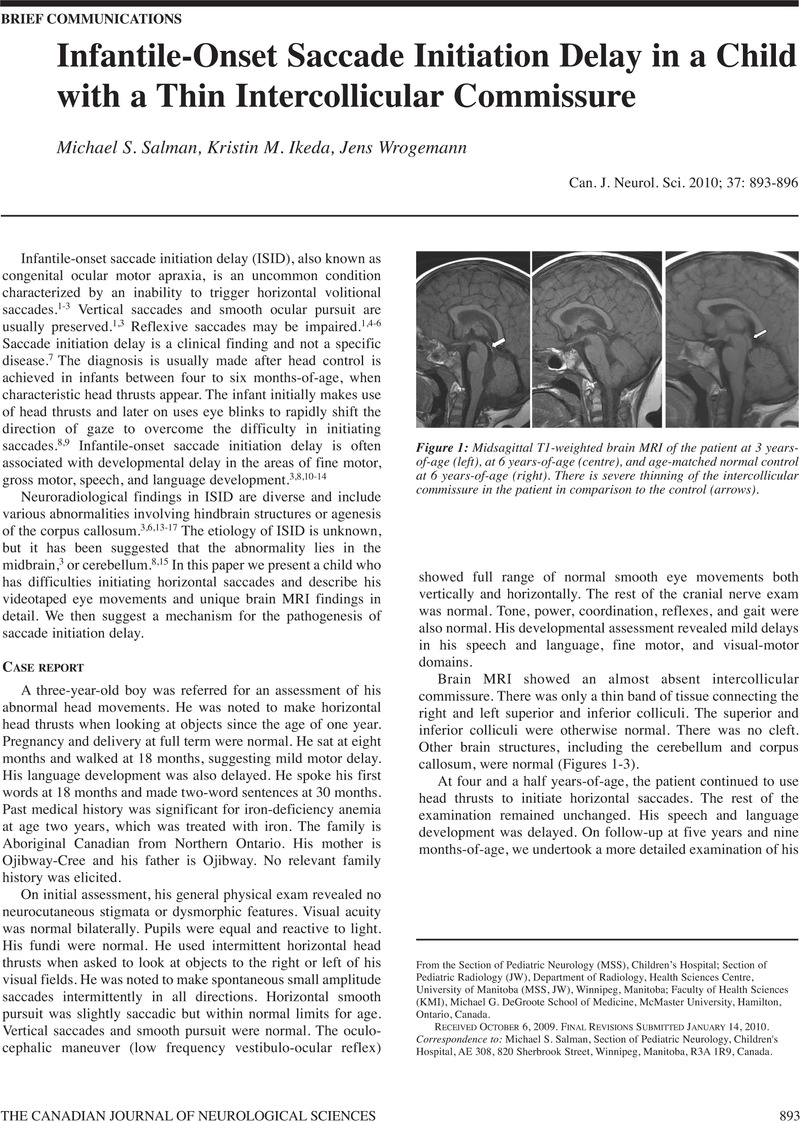Crossref Citations
This article has been cited by the following publications. This list is generated based on data provided by Crossref.
Salman, Michael S.
and
Ikeda, Kristin M.
2014.
Do the Clinical Features in Infantile-Onset Saccade Initiation Delay (Congenital Ocular Motor Apraxia) Correlate With Brain Magnetic Resonance Imaging Findings?.
Journal of Neuro-Ophthalmology,
Vol. 34,
Issue. 3,
p.
246.
Salman, Michael S.
2015.
Infantile-Onset Saccade Initiation Delay (Congenital Ocular Motor Apraxia).
Current Neurology and Neuroscience Reports,
Vol. 15,
Issue. 5,
Salman, Michael S.
and
Bunge, Martin
2023.
Fundamentals of Pediatric Neuro-Ophthalmology.
p.
169.
Salman, Michael S.
and
Bunge, Martin
2024.
Persistence of Infantile-Onset Saccade Initiation Delay (Congenital Ocular Motor Apraxia): An Update on a Young Adult.
Canadian Journal of Neurological Sciences / Journal Canadien des Sciences Neurologiques,
Vol. 51,
Issue. 2,
p.
310.



